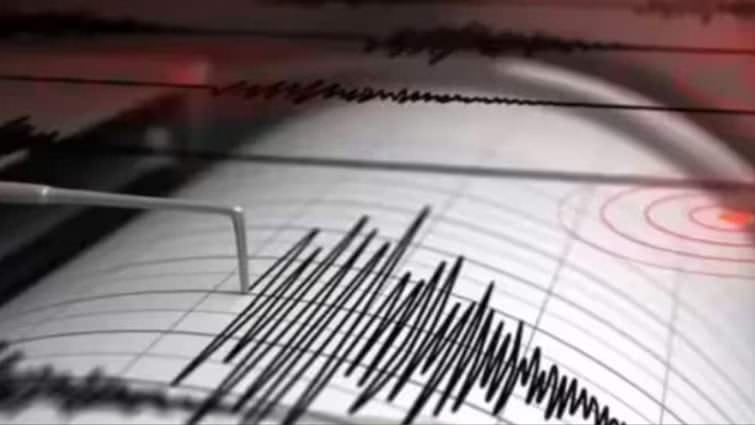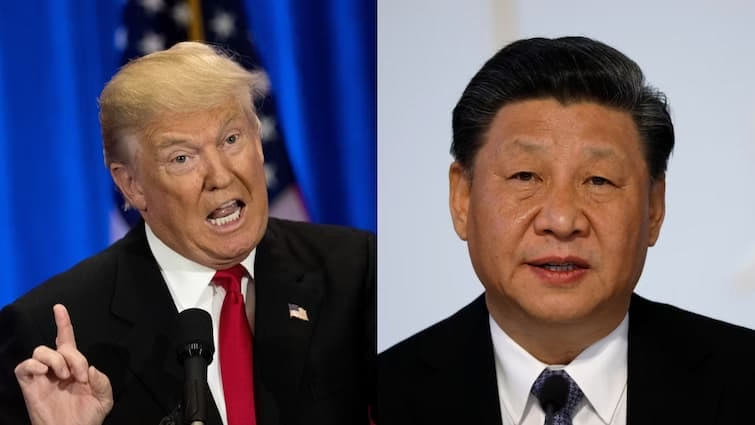
Bangkok4 minutes ago
- Copy link

It is the year 2014. The BJP government was formed in the country after 10 years. Modi was sworn in as Prime Minister. It also included 6 leaders from the SAARC countries along with the then PM of Pakistan Nawaz Sharif. This is the first time that foreign leaders arrived at the swearing in of an Indian PM.
After 6 months, Modi reached Kathmandu to attend the SAARC Summit. In this summit, India’s emphasis was on bringing rail and motor vehicle agreement, but the Pak government put a hindrance in it. Not only this, Pakistan advocated the introduction of Silk Road Project of Observer Country China in SaARC.
Modi was so angry with this that he did not even meet Nawaz Sharif. After Uri attack in 2016, India refused to go to Pakistan to attend the SAARC summit.
After India’s refusal, Bangladesh, Bhutan and Afghanistan also refused to go to Pakistan. After 9 years of this incident, no summit of Saarc has been done again till date.

This picture of Modi and Nawaz Sharif was very much discussed in SAARC Summit 2014. However, both countries did not give formal status to the meeting.
The Government of India is now focusing on advancing Bimstec instead of SAARC. Pakistan is not a part of this organization.
PM Modi reached Thailand on Thursday on the first official visit. Today he will attend the Bimstec Summit. Today, he can meet here with Mohammad Yunus, the head of the interim government of Bangladesh and Nepal’s PM KP Sharma Oli.
In the story, we will know what Bimstec is, why is it necessary for India…
The world rapidly changed after the end of the Cold War and the fall of the Soviet Union in the 1990s. During the period of globalization, countries were forced to form an economic alliance. This was felt in the countries of South and South-East Asia.
South-East Asian countries had ASEAN (Association of Southeast Asian Nations), which was largely successful, but neighboring countries like India, Bangladesh and Sri Lanka did not find any place. That is, there was no platform for India and its neighboring countries that could firmly lead economic cooperation.
Former Thailand Foreign Minister Thanat Khamanan gave the idea of establishing Bimstec in 1994. Thailand proposed the formation of a regional group under the ‘Look West Policy’ that could add South Asia and Southeast Asia. India also had to strengthen its relations with South East Asia under its look East policy. Therefore, it was formed in 1997 at the initiative of the two countries.

Organization formed by bringing countries adjoining the Bay of Bengal Bimstec is a regional organization of seven countries adjacent to the Bay of Bengal. Its full name is Bay of Bengal Initiative for Multi Sectoral Technical and Economic Co-operation. It was formed in 1997.
Initially it had four countries and it was called BIST-EC i.e. Bangladesh, India, Sri Lanka and Thailand Economic Cooperation Organization. It was only in 1997 when Myanmar and Bhutan and Nepal in 2004 were named Bimstec.
The coastal countries adjoining the Bay of Bengal do not include Nepal and Bhutan. Both these countries are surrounded from all sides. Nevertheless, they have been included in this organization because both these countries are a big source of hydropower (water).
India started policy for connectivity in East Asia In 1991, India launched a look East policy to increase connectivity with countries located in East Asia. In the year 2014, making a big change in it, it was converted from the look East to the Act East Policy.
80% marine oil trade and 40% global trade occurs through the Indian Ocean. In such a situation, the Bay of Bengal and its surroundings are very important for India.
On the other hand, China has submitted its steps in the region through its belt and road initiative (BRI). In such a situation, India wants to counter Chinese BRI through BIMSTEC member countries. In such a situation, the importance of the Bay of Bengal and its surroundings present here has increased significantly.

India’s focus on Bimstec leaving Saarc because of Pakistan Bimstec is also considered an alternative to SAARC (South Asian Regional Cooperation Organization). SAARC, established in 1985, includes India, Pakistan, Bangladesh, Sri Lanka, Nepal, Maldives, Bhutan, Afghanistan.
The Modi government started insisting on increasing the Bimstec activity soon after the failure of the SAARC Summit held in Nepal in 2014. All the countries involved in the SAARC have veto power, Pakistan used to use it to put an obstacle in the necessary agreement. Unlike Saarc, no country has veto power in Bimstec.
september After the terrorist attack at the Indian Army base in Uri, Jammu and Kashmir in 2016, the SAARC conference in Islamabad was canceled that year, as other members of the group boycotted it with India. Since then, no SAARC conference has been held till date.
4 challenges of BIMSTEC, FTA has not been compromised for 20 years
1. Bimstec countries had signed an agreement on the Free Trade Agreement (FTA) in 2004, but it has not yet been implemented.
2. It took 25 years for the organization to adopt a formal charter, delaying in creating a better institute and the process of making decisions slowed down.
3. issues like tension between Bangladesh and Myanmar, tension between Bangladesh and India are also becoming a challenge for this organization.
4. Countries like Thailand and Myanmar prioritize ASEAN more than Bimstec.
Small countries are afraid of India’s economy
There are many difficulties in implementing free trade agreement (FTA) in Bimstec. Actually, the economy of countries involved is very different. Countries with strong economy like India and Thailand want to implement FTA since 2004, but weak economy countries like Bhutan, Nepal, Myanmar do not want so.
They are afraid that the implementation of FTA will negatively affect their domestic industries and they will not be able to compete with cheap imports.





